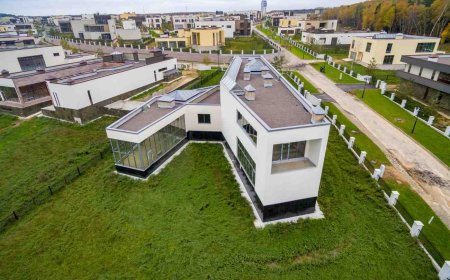Building Multilingual Audio Datasets for Global AI Voice Models
This comprehensive guide explores the essential components of multilingual audio datasets, the challenges developers face, and proven strategies for building systems that truly understand and communicate across languages.

Voice technology is breaking down language barriers worldwide. Behind every successful multilingual AI system lies a robust audio dataset that captures the nuances of human speech across cultures, accents, and dialects. These datasets power everything from virtual assistants to real-time translation services, making technology accessible to billions of speakers globally.
This comprehensive guide explores the essential components of multilingual audio datasets, the challenges developers face, and proven strategies for building systems that truly understand and communicate across languages.
Understanding Multilingual Audio Datasets
A multilingual audio dataset is a structured collection of voice recordings paired with corresponding text annotations across multiple languages. These datasets serve as the foundation for training sophisticated AI models that can understand, generate, and translate speech across linguistic boundaries.
Unlike monolingual datasets, multilingual collections must account for phonetic variations, cultural context, and regional dialects. They typically include recorded speech samples, accurate transcriptions, speaker metadata, and linguistic annotations that help AI systems learn the subtle patterns that make human communication natural and meaningful.
The most effective datasets combine studio-quality recordings with real-world audio samples, ensuring AI models perform well in controlled environments and noisy, everyday situations.
Key Characteristics of Quality Speech Datasets
Building effective multilingual audio datasets requires careful attention to several critical factors that directly impact model performance.
Speaker Diversity and Representation
The most successful datasets include voices from diverse demographic groups. This means incorporating speakers of different ages, genders, and regional backgrounds to ensure AI models work effectively for all users. Native speakers provide authentic pronunciation patterns, while non-native speakers help models understand accented speech.
Regional variations within the same language are equally important. Spanish spoken in Mexico differs significantly from Spanish spoken in Argentina, and these distinctions must be captured in training data.
Audio Format and Technical Standards
Technical specifications directly impact model quality. High-quality datasets typically use uncompressed WAV files at 44.1 kHz or 48 kHz sampling rates. Mono channel recordings often provide better clarity for speech recognition tasks, while consistent loudness normalization (typically -23 LUFS) ensures uniform audio levels across the dataset.
Accurate Transcriptions and Annotations
Precise transcriptions form the backbone of any speech dataset. These must include proper punctuation, standardized spelling, and accurate timestamps. Advanced datasets also include phoneme-level annotations, speaker identification tags, and emotional context markers that help models understand not just what was said, but how it was said.
The Complexities of Creating TTS and Speech Datasets
Developing high-quality multilingual audio datasets presents unique challenges that require careful planning and execution.
Language Diversity Challenges
Each language brings distinct phonetic structures, grammatical rules, and cultural contexts. Tonal languages like Mandarin Chinese require different approaches than syllable-timed languages like Spanish. Some languages have complex consonant clusters, while others rely heavily on vowel variations.
Regional dialects add another layer of complexity. What sounds natural in one region may seem artificial in another, making it essential to capture authentic local variations while maintaining consistency across the dataset.
Speaker Demographics and Recruitment
Finding representative speakers across multiple languages requires extensive recruitment efforts. Native speakers must be identified, vetted, and trained to provide consistent recording quality. This process becomes particularly challenging for less common languages or specific regional dialects.
Cultural sensitivity plays a crucial role in this process. Recording sessions must respect local customs, and content must be appropriate for the target culture.
Data Quality and Scalability
Maintaining consistent quality across thousands of hours of recordings requires robust quality control processes. Background noise, microphone variations, and recording environment differences can significantly impact model performance.
Scalability challenges emerge when datasets need to expand to include new languages or additional speakers. The infrastructure must support growth while maintaining quality standards.
Elements of High-Quality Text-to-Speech Datasets
Successful TTS datasets require specific technical and linguistic elements that enable natural-sounding speech synthesis.
Technical Specifications
Audio quality standards must be strictly maintained throughout the dataset. This includes consistent sampling rates, bit depths, and file formats. Environmental noise should be minimized in studio recordings while controlled noise variations help models handle real-world conditions.
Loudness normalization ensures consistent volume levels across all recordings, preventing some speakers from being artificially emphasized over others during training.
Linguistic Coverage
Effective TTS datasets include phonetically rich sentences that cover all possible sound combinations in each target language. This means including words with rare phonemes, challenging consonant clusters, and varied intonation patterns.
Sentence structures should represent natural speech patterns, including questions, statements, and emotional expressions. Domain-specific vocabulary can be included for specialized applications.
Metadata and Annotation Standards
Comprehensive metadata enables more sophisticated model training. This includes speaker demographics, recording conditions, emotional context, and linguistic features. Proper annotation helps models learn when to apply specific prosodic patterns or adjust speaking styles.
Best Practices for Audio Datasets in Machine Learning
Implementing proven strategies significantly improves dataset quality and model performance.
Balanced Script Development
Scripts should represent natural language use while ensuring comprehensive phonetic coverage. This balance requires collaboration between linguists and domain experts to create content that sounds authentic while covering necessary linguistic features.
Including various sentence types, lengths, and complexity levels helps models generalize better to real-world speech patterns.
Noise Variability Management
Controlled noise inclusion helps models perform well in real-world environments. This might include recordings in different acoustic environments, with varying background noise levels, and using different microphone types.
However, noise must be carefully managed to avoid overwhelming the speech signal or introducing artifacts that could harm model performance.
Multimodal Data Integration
Combining audio with additional information streams enhances model capabilities. This might include visual information for lip-reading applications, emotional context for more expressive speech, or linguistic features for better pronunciation accuracy.
Comprehensive Linguistic Review
Native linguists should review all content to ensure cultural appropriateness and linguistic accuracy. This includes checking for offensive content, ensuring proper grammar and pronunciation, and validating that regional variations are correctly represented.
Real-World Success Stories
Examining successful multilingual audio dataset projects provides valuable insights into effective implementation strategies.
Mozilla Common Voice Project
Mozilla's Common Voice initiative demonstrates the power of crowdsourced data collection. By engaging volunteers worldwide, they created a dataset covering over 110 languages and dialects, including many underrepresented languages.
The project's success stems from its community-driven approach, which provided authentic regional variations while maintaining quality through peer review and validation processes. This approach proved particularly effective for languages with limited commercial datasets.
Google's Indic Language Initiative
Google's expansion of voice services into Indian languages showcases the challenges and opportunities in multilingual AI development. Their approach included extensive local speaker recruitment, cultural adaptation of content, and development of language-specific optimization techniques.
The project's success enabled Google Assistant to support nine Indian languages, significantly expanding accessibility for millions of users who previously had limited access to voice-enabled services.
Choosing Between Building and Purchasing Datasets
Organizations face important decisions about dataset development approaches, each with distinct advantages and challenges.
Building Internal Datasets
Developing datasets internally provides complete control over quality, content, and specifications. This approach works well for organizations with specific requirements or proprietary applications. However, it requires significant investment in infrastructure, expertise, and time.
Internal development typically takes 6-12 months for comprehensive multilingual datasets, requiring specialized teams for linguistics, audio engineering, and quality assurance.
Partnering with Dataset Providers
Working with specialized providers offers faster deployment and access to established quality processes. Experienced providers bring proven methodologies, global speaker networks, and technical infrastructure that can significantly reduce development time and costs.
When evaluating providers, consider their language coverage, quality standards, compliance certifications, and ability to customize datasets for specific applications.
Applications Across Industries
Multilingual audio datasets enable transformative applications across numerous sectors.
Healthcare and Accessibility
Medical applications require highly accurate speech recognition for patient safety. Multilingual datasets enable voice-controlled medical devices, patient instruction systems, and accessibility tools for individuals with disabilities.
Cultural sensitivity becomes particularly important in healthcare contexts, where miscommunication can have serious consequences.
Customer Service and Support
Automated customer service systems rely on multilingual datasets to understand and respond to customer queries across languages. These applications require natural-sounding speech synthesis and accurate recognition of various accents and speaking styles.
Education and Language Learning
Language learning applications use multilingual datasets to provide pronunciation feedback, conversation practice, and adaptive learning experiences. These systems must capture subtle pronunciation differences and provide culturally appropriate content.
Automotive and Navigation
In-car voice assistants require robust multilingual capabilities to serve global markets. These systems must work reliably in noisy environments while understanding natural speech patterns and regional variations.
Future Directions in Multilingual AI
Emerging trends are shaping the future of multilingual audio dataset development and application.
Zero-Shot and Few-Shot Learning
Advanced AI techniques increasingly enable models to work with new languages using minimal training data. This development could revolutionize support for rare languages and dialects that have limited digital resources.
Emotion and Prosody Modeling
Next-generation datasets include emotional annotations and prosodic features that enable more natural and expressive speech synthesis. These capabilities are particularly important for applications requiring empathetic or engaging interactions.
Real-Time Translation and Communication
Multilingual datasets are enabling real-time voice translation systems that can facilitate natural conversation between speakers of different languages. These systems represent a significant step toward breaking down language barriers in global communication.
Building the Foundation for Global AI Communication
Multilingual audio datasets represent the foundation of inclusive AI technology that serves diverse global communities. Success requires careful attention to technical quality, cultural sensitivity, and comprehensive linguistic coverage.
Organizations investing in multilingual voice technology must balance development costs with quality requirements while ensuring their solutions work effectively for intended users. Whether building internal capabilities or partnering with specialized providers, the key lies in understanding specific application requirements and implementing proven quality standards.
The future of AI communication depends on datasets that truly capture the richness of human speech across languages and cultures. By following established best practices and learning from successful implementations, developers can create systems that break down language barriers and make technology accessible to speakers worldwide.
As voice technology continues to evolve, the organizations that invest in high-quality multilingual datasets today will be best positioned to serve the global markets of tomorrow.


































